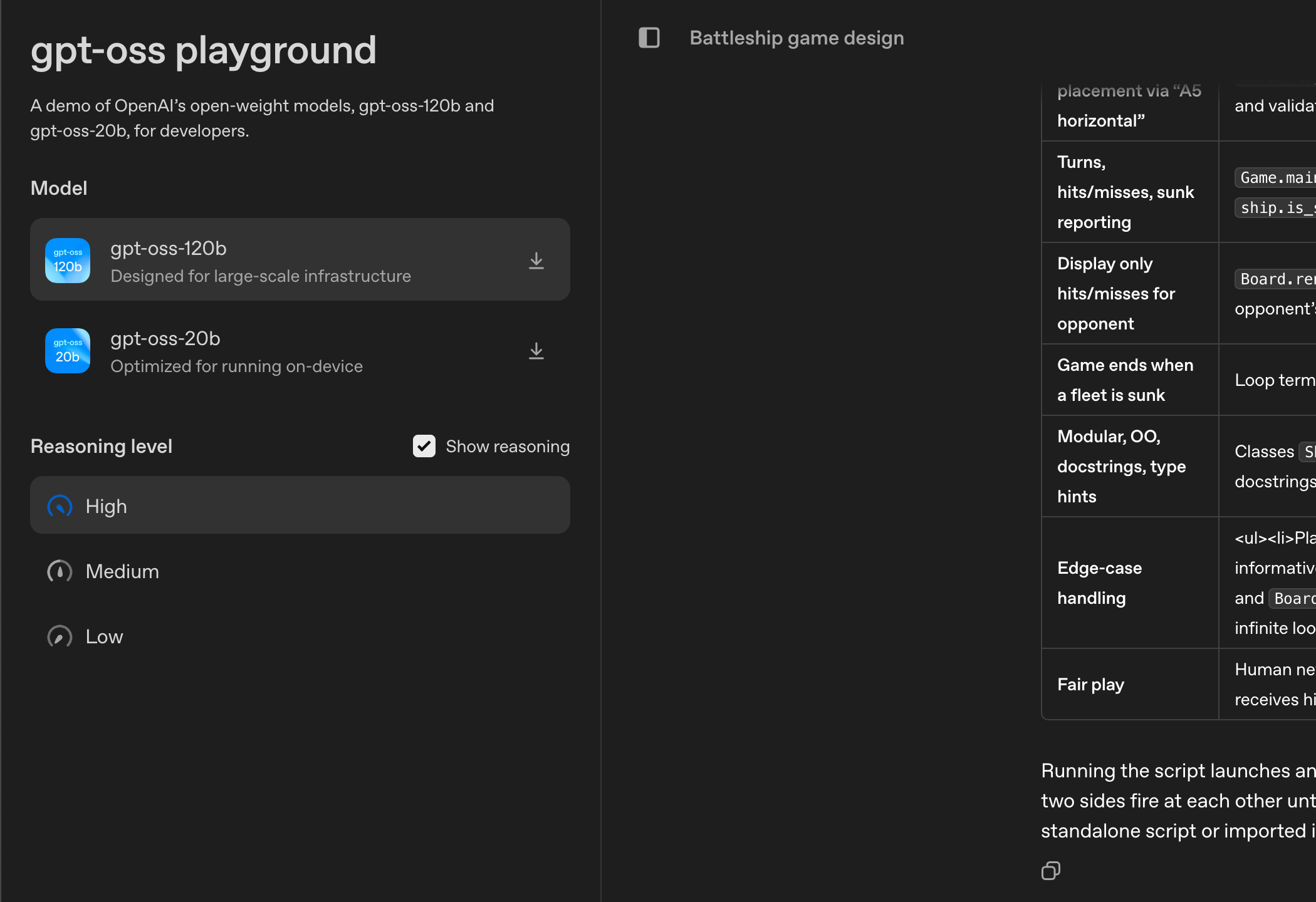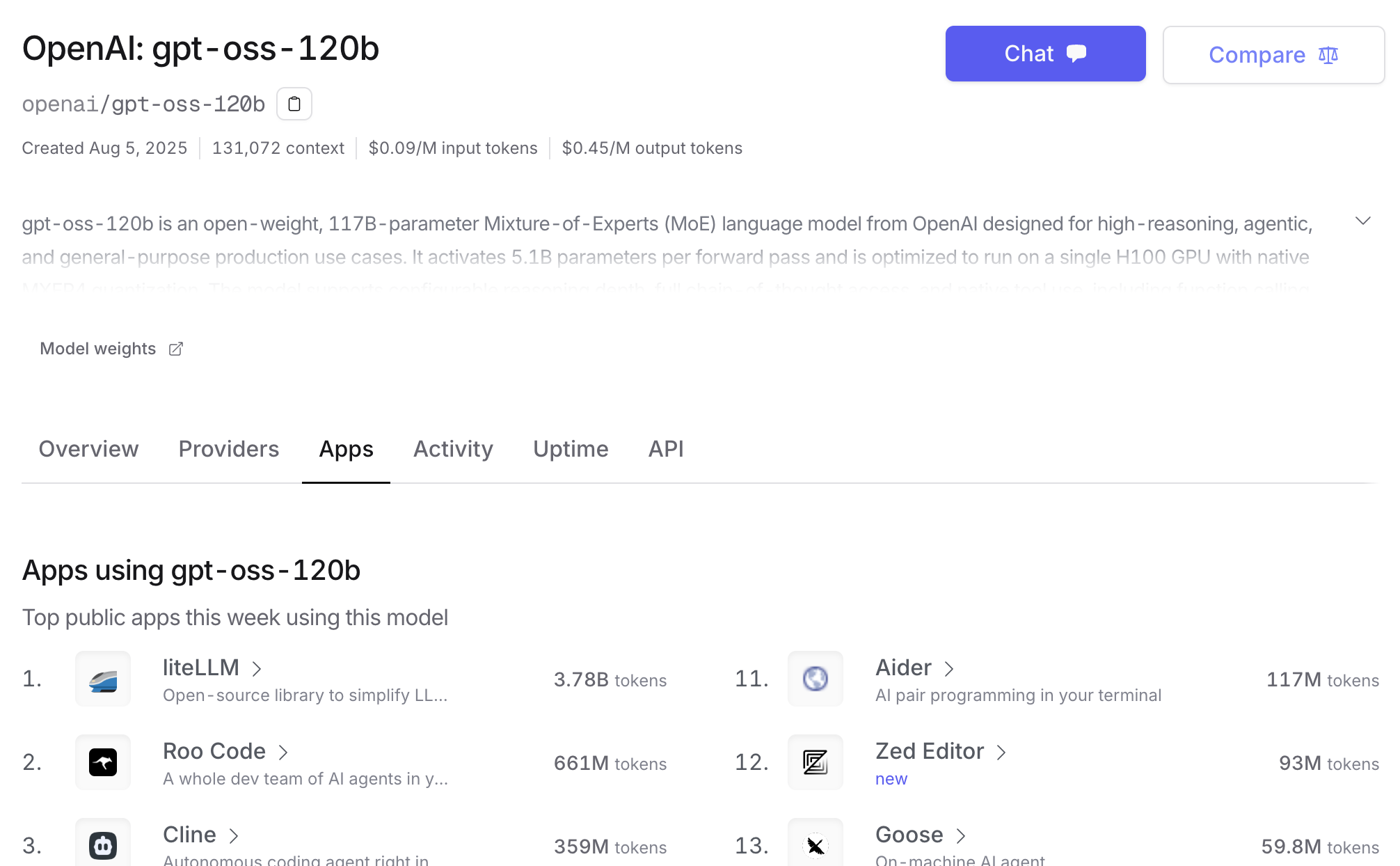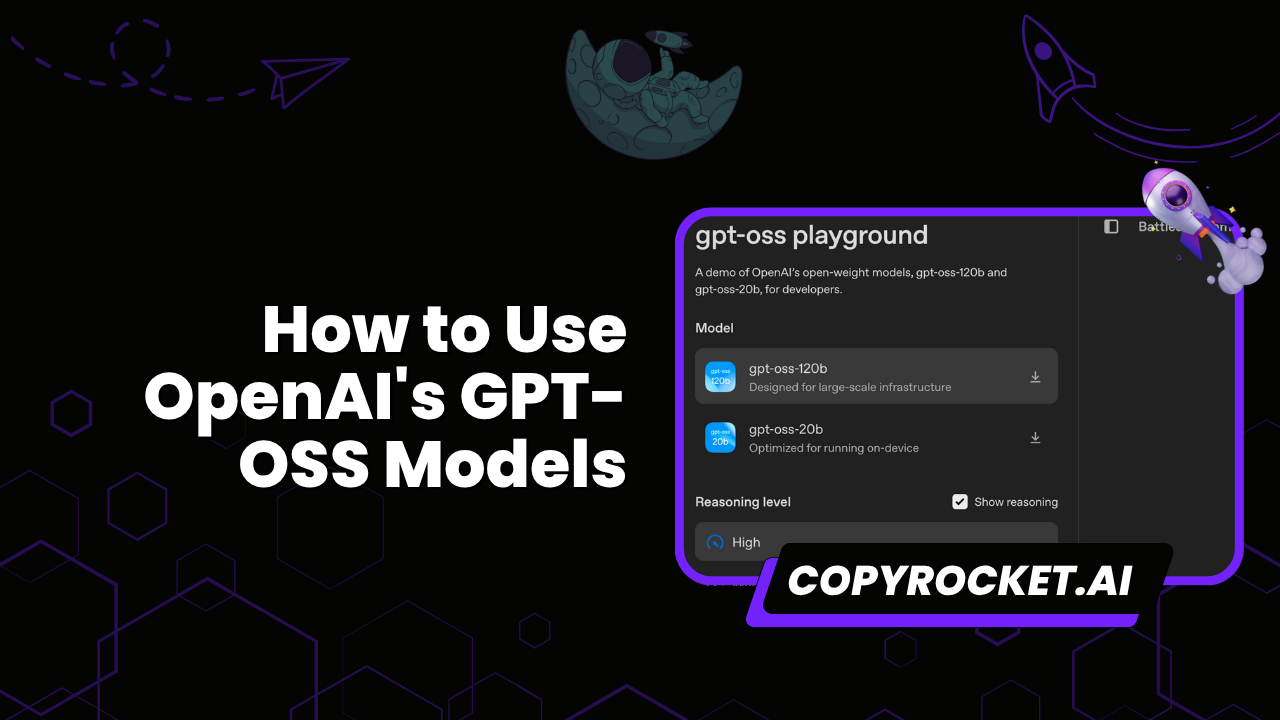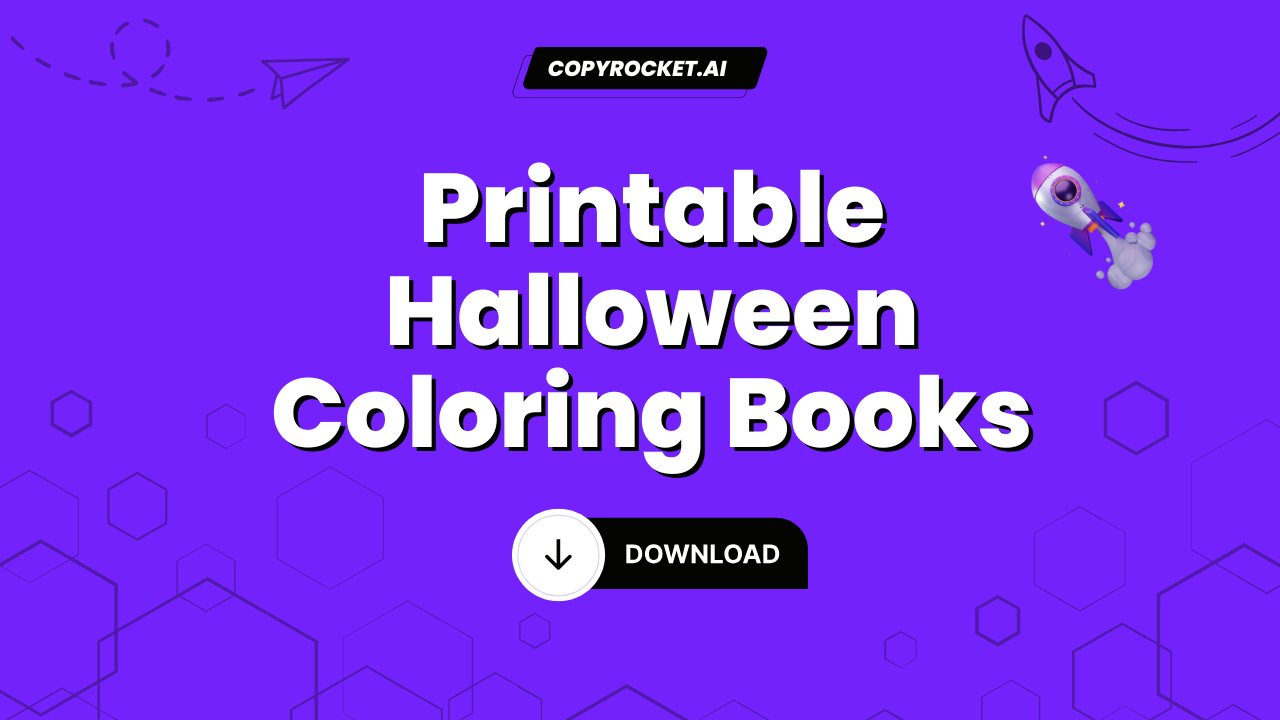The release of OpenAI's GPT-OSS models has sparked curiosity and excitement throughout the AI and tech communities.
Promoted as high-performance, open-weight models with strong reasoning capabilities, GPT-OSS 120B and 20B promise key advancements while addressing longstanding debates about accessibility in AI development.
But are these models truly revolutionary, or is the buzz around them inflated?
This blog breaks down how to use GPT-OSS models effectively, evaluates their real-world utility, and dives into hands-on testing with tasks ranging from gaming simulations to backend development.
Finally, we’ll analyze whether GPT-OSS models live up to the hype.
Key Takeaways
- GPT-OSS models include two versions, 120B and 20B, offering flexibility for high-performance and budget-conscious deployments.
- These models excel in reasoning, function calling, and tool integration but may require iterative refinement during real-world use.
- They are freely available under the Apache 2.0 license, enabling customization and control for developers.
- Testing showcases successes in simulations like Battleship gameplay, ecosystems, and coworking apps, though limitations in specificity persist.
- FAQs clarify deployment, customization, and potential costs associated with GPT-OSS use.
What Are GPT-OSS Models?
OpenAI’s GPT-OSS models are open-weight AI models designed to serve a broad spectrum of users, from individual developers to enterprises. They provide robust reasoning capabilities while offering compatibility with various hardware and open-source tooling.
Features of GPT-OSS Models
- Two Model Variants:
- GPT-OSS 120B (117 billion parameters): Requires 80 GB of memory and is designed for high-performance reasoning tasks.
- GPT-OSS 20B (21 billion parameters): Optimized for edge devices, needing just 16 GB of memory.
- Reasoning & Tool Capabilities:
- Supports Chain-of-Thought (CoT) reasoning.
- Enables few-shot function calling and advanced tool integration.
- Open Source Flexibility:
- Freely licensed under Apache 2.0 for modification, redistribution, and customization.
- Customizable through open inference stacks like vLLM, Ollama, and llama.cpp.
- Safety and Security:
- Includes extensive safety checks to minimize misuse.
- Default deployments require user-implemented safeguards in unmonitored environments.
- Resource Efficiency:
- Pre-trained on text datasets focusing on coding, STEM, and general knowledge.
- Uses Rotary Positional Embedding (RoPE) for efficient context handling, up to 128k tokens.
Use Cases
The flexibility of GPT-OSS enables various applications:
- Edge computing on local or consumer-grade hardware.
- Cost-efficient reasoning tasks like decision-making and problem-solving.
- Fine-tuning for specialized domains, such as health, coding, or education.
Where Can I Use GPT-OSS Models?
The GPT-OSS models are versatile and accessible across various platforms, making it easier than ever to integrate advanced language capabilities into your workflows. Below are three ways you can start using GPT-OSS today:
On gpt-oss.com

You can access GPT-OSS directly at gpt-oss.com by signing in with your Hugging Face ID. This platform allows you to chat effortlessly with both provided models, designed and fine-tuned by OpenAI, offering seamless and efficient interaction.
Use Ollama Chat for Machine-Based Models

Ollama Chat enables you to download 20B GPT-OSS models directly onto your local machine. With this setup, you can start chatting instantly, enjoying the benefits of local processing without relying on constant internet connectivity. It’s a quick and straightforward way to deploy powerful models for personal or professional use.
Agentic Coding Tools

Agentic coding tools like OpenCode, RooCode, and Cline provide additional ways to employ GPT-OSS. By connecting your Ollama or OpenRouter API key, you can unlock the use of the expansive 120B model. Though this option may involve some costs, detailed pricing is available on the OpenRouter page.

These tools cater to advanced use cases, offering robust functionality for coding and problem-solving tasks.
Hands-On Testing of GPT-OSS Models
To evaluate the usability and impact of GPT-OSS, we tested the 120B and 20B models in three practical scenarios. Here are the results with video for each tasks.
Task 1: Battleship Game Simulation
We began with a Python script for a classic Battleship gaming experience. The GPT-OSS 120B model demonstrated efficient planning and implementation of logic-critical tasks. Here's how it worked:
- Created a 10x10 game grid for players to place ships.
- Included various ship types (e.g., carrier, battleship, cruiser) and logic for valid moves.
- Validated inputs rigorously, effectively avoiding errors like invalid coordinates.
Outcome:
- The model generated functional and error-free code.
- Ship placements and predictions aligned well with gameplay rules.
- Faster completion than earlier proprietary models (e.g., OpenAI o4-mini).
While highly effective, customization and minor tweaks post-generation enhanced usability.
Task 2: Ecosystem Simulation
The next test explored the creation of an ecosystem simulation app. The model was tasked with producing a dynamic 2D board featuring predators, prey, and plants:
- Predators and prey had distinct behaviors governed by interrelation and position on the board.
- Plants regenerated periodically based on pre-set growth logic.
Outcome:
- Visual components, like red predators and green plants, were appropriately integrated.
- Simulation patterns (e.g., predator counts falling as prey decreased) followed expected rules.
- Final outputs showcased an interactive balance of population dynamics.
Drawback:
Deterministic events (e.g., interactions across overlapping populations) occasionally lacked precision, requiring several iterations to fine-tune mechanics.
Task 3: Coworking Space Booking App
The third test aimed to evaluate backend functionalities by building a booking system for coworking spaces. Using React and Tailwind CSS for the frontend, the app also required admin approvals for room bookings.
Outcome:
- The AI generated basic login functionalities and a user-friendly UI for booking submissions.
- Backend logic, such as API systems for multiple user roles (admin, manager), exhibited initial gaps, resolved after iterative improvements.
- Despite initial challenges, the base app was functional, cost-effective, and extensible.
GPT-OSS performed impressively under structured inputs but required user intervention to ensure goal-specific satisfaction.
Frequently Asked Questions
Are GPT-OSS models free to use?
Yes, the models are free to download under the Apache 2.0 license. However, users must bear compute, storage, or hosting costs.
What hardware is required to run these models?
- GPT-OSS 120B requires 80 GB of memory, suitable for high-performance GPUs.
- GPT-OSS 20B needs 16 GB, ideal for consumer-grade GPUs or on-device applications.
Can these models be accessed via OpenAI API?
No, GPT-OSS models are not available through OpenAI’s API. Users must self-host or use third-party providers.
Can I fine-tune GPT-OSS models?
Yes, fine-tuning is possible with open-source tools. OpenAI does not directly support fine-tuning for these models via their API.
Are these models safe for deployment?
The models incorporate safety mechanisms but may need additional safeguards when used in sensitive environments.
Is GPT-OSS cheaper than OpenAI's proprietary offerings?
Self-hosting costs vary with implementation. While upfront expenses may seem lower, in-house maintenance and resource allocation could offset the savings.
Final Thoughts
OpenAI’s GPT-OSS models make a significant leap in decentralizing AI accessibility by offering advanced reasoning capabilities in an open-weight format. From gaming simulations to dynamic applications, GPT-OSS unlocks various possibilities for individual developers and organizations. However, their success depends on user involvement to refine outputs and address specific needs.
While GPT-OSS isn’t as polished as some proprietary models, the ability to operate without external API costs significantly widens its appeal. The key lies in its flexibility and control, providing unparalleled opportunities for innovation.
Verdict:
GPT-OSS delivers on most of its promises but isn’t without limitations. It’s a step forward in democratizing AI tools, though its utility depends heavily on the user's expertise and willingness to iterate. Whether it's a game changer or overhyped will depend on your specific use case and expectations.
Have you tried GPT-OSS yet? Share your experiences in the comments below!





